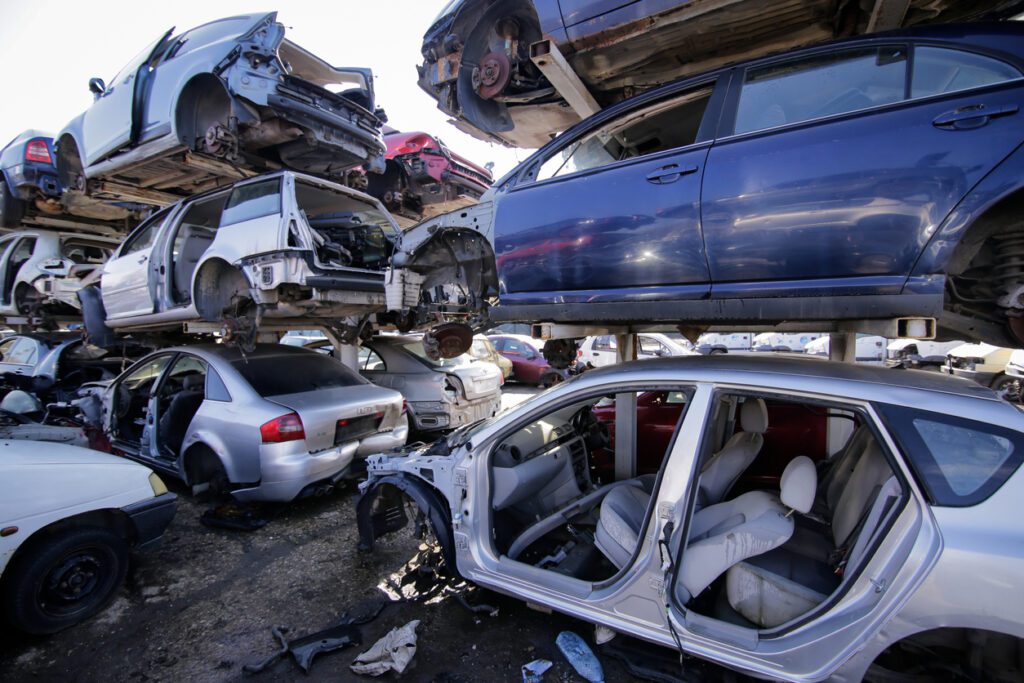Have you ever wondered what happens to end-of-life vehicles that are sent for scrap? How does the whole scrapping process work? Well, these are the 6 steps of scrapping, from the moment you choose to scrap your vehicle through to the final elements of your car being recycled. Read on for more.

1. Secure a Quote and Arrange Collection
So, you’ve decided it’s time to scrap your vehicle. The first step you’ll need to take is to secure a quote for it to be collected and scrapped. You could spend some time contacting local dealers, or simply save yourself the time and effort and use our scrap value comparison tool to find the best quote quickly and easily. You’ll need to supply some details about the condition, make and model of your vehicle and will have quotes in no time. You can then pick the dealer who best suits you and work with them to arrange a collection.
If your vehicle is in good enough condition to be fixed and resold, your scrap dealer may decide to send it to salvage, and you could be due more money. Find out more with our scrap vs salvage car guide.
2. Collection
Once you have the collection price, date and time arranged, you’ll need to make sure you’re around when your car is picked up. The collector will arrive in a pick-up vehicle, most likely to tow or winch your car away. You’ll need to make sure there’s enough space for them to access your vehicle and that, ideally, you’re able to roll the vehicle into the right position. If you don’t think your car is easily moved, you can check out our scrapping a car with no tyres and scrapping a car with no keys guides, which will give you some ideas on what you’ll be able to do.
Before it’s picked up, you may need to clear your car of any rubbish or personal items, as well as ensuring you have all of the relevant paperwork to hand. Our guides on how to prepare your car for scrapping and what documents you need to scrap a car guide explain more.
3. Taken to an ATF
The pick-up truck will then take your vehicle to an ATF, which stands for Authorised Treatment Facility. These are scrapping facilities that are legally licensed to scrap your vehicle, meaning they’ve been approved by the Environmental Authority to dispose of your car in a way that’s both correct and environmentally sound. ATFs are required to recycle at least 95% of a car, so you’ll know that your vehicle is going to good use. You can learn more about ATFs with this guide.
4. Depollution
The first step of the actual scrapping process is depollution, which is when all hazardous materials and parts are removed. This includes elements such as fuel, the battery, the catalytic converter, the gas tank and any liquids, such as oil, brake fluid, antifreeze and coolant. By removing these parts first, the ATF can ensure they’ll pose no harm to humans, animals or the environment.
Potentially explosive materials, like the airbag, will be carefully removed, engine hoses and exhaust systems will be disconnected and liquid chambers of the vehicle will be flushed through with water to make sure they’re totally clean.
5. Dismantlement
Now that the vehicle is completely safe from hazardous materials, it’s time to be dismantled, working through the engine, the undercarriage and the main body of the car.
Once removed many of these items will be reused or recycled. For example:
- Tyres – can be recycled as flooring on football pitches and children’s playgrounds
- Glass windows – can be converted into ornaments or tiles
- Dashboard plastics – will often be reused in garden furniture or rubbish bins
- Leather interiors – could become handbags and belts
Find out more about how your car scrap car could be recycled with this guide.
6. Destruction
And finally, once just the frame of the car is left, it will be crushed (the satisfying bit) and the final metals will be separated from the frame at a metal mill. The metal is ‘detinned’, meaning the thin layer of tin used to protect the car is removed, then the steel is melted down and ready to be used for any number of other items – even in the production of more cars.
Not that you need to worry about most of these steps. Any involvement you’ll need to have finished straight after collection, leaving you free to enjoy spending the money you received for scrapping your car, whilst knowing your vehicle has gone on to be reused in one way or another.
If you have an end-of-life car that’s ready to be scrapped, then you can find a scrap dealer near you and start the process today with Scrap Car Comparison, or if you’re looking to check if a car you once owned has been scrapped, you can find out with our guide on that very subject.


